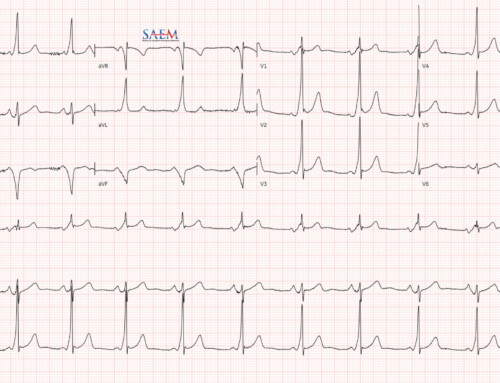 Venipuncture is the most common invasive procedure performed in the emergency department 1 , likely due to the fact that the vast majority of our laboratory evaluations require blood and many of our life saving interventions require access to the patient’s systemic circulation. Most of the time emergency department staff are able to perform this procedure easily, but occasionally you find that your patient is the dreaded “difficult stick”. Literature suggests that the landmark technique is successful on the initial venipuncture 74-77% of the time. 2–5 Success rates rise after multiple attempts, but what happens when you don’t have the luxury of time? What happens when your patient will die if you don’t get life saving medications into their circulation promptly? There are a few options when you can’t get IV access through traditional means, among them external jugular vein cannulation, central line, ultrasound-guided IV, and the intraosseous lines (IO).6 However, when managing the crashing patient, a wise decision is to use the quickest option, which is often the IO.
Venipuncture is the most common invasive procedure performed in the emergency department 1 , likely due to the fact that the vast majority of our laboratory evaluations require blood and many of our life saving interventions require access to the patient’s systemic circulation. Most of the time emergency department staff are able to perform this procedure easily, but occasionally you find that your patient is the dreaded “difficult stick”. Literature suggests that the landmark technique is successful on the initial venipuncture 74-77% of the time. 2–5 Success rates rise after multiple attempts, but what happens when you don’t have the luxury of time? What happens when your patient will die if you don’t get life saving medications into their circulation promptly? There are a few options when you can’t get IV access through traditional means, among them external jugular vein cannulation, central line, ultrasound-guided IV, and the intraosseous lines (IO).6 However, when managing the crashing patient, a wise decision is to use the quickest option, which is often the IO.
There are already multiple methods for confirming IO placement, including return of bone marrow, visualization of blood in the stylet, firm placement of the needle in the bone, and the ability to smoothly deliver a fluid flush. 1,7 Here, we suggest another method.
Trick of the Trade for Confirmation of IO Placement
Check for IO flush resistance while squeezing around the site of placement
Recently, I placed an IO in a crashing obese patient and afterwards noted marrow and blood return and firm placement. After flushing and beginning to bolus fluids, I noticed that this awake patient seemed to be fairly comfortable with the fluids going into his tibia. This concerned me, as I recalled that a bolus infusion into the marrow has been reported to be a painful procedure. I elected to manually compress the area around the IO with both hands, and found that flow that I thought was going into the bone halted. This confirmed my suspicion that I had in fact likely gone through the bone, and was infusing IV fluids into soft tissue.


After the misplaced IO was removed and another was placed successfully on the contralateral tibia, the patient was successfully resuscitated and was able to be safely transported to a higher level of care. Afterwards, we did a literature search and found that we were not alone in considering this a method of IO confirmation.
Lee et al performed an experiment in the limbs of pigs and found that when the IO tip was placed in the subcutaneous tissue and the area around the needle was manually compressed, the pressure was transmitted into the syringe attached to the IO. 6
It is reasonable to assume this animal data can be applied to humans. We’re not suggesting that this method replace other methods, but rather, that one can use this method as another tool in their quiver to help manage a crashing patient.






